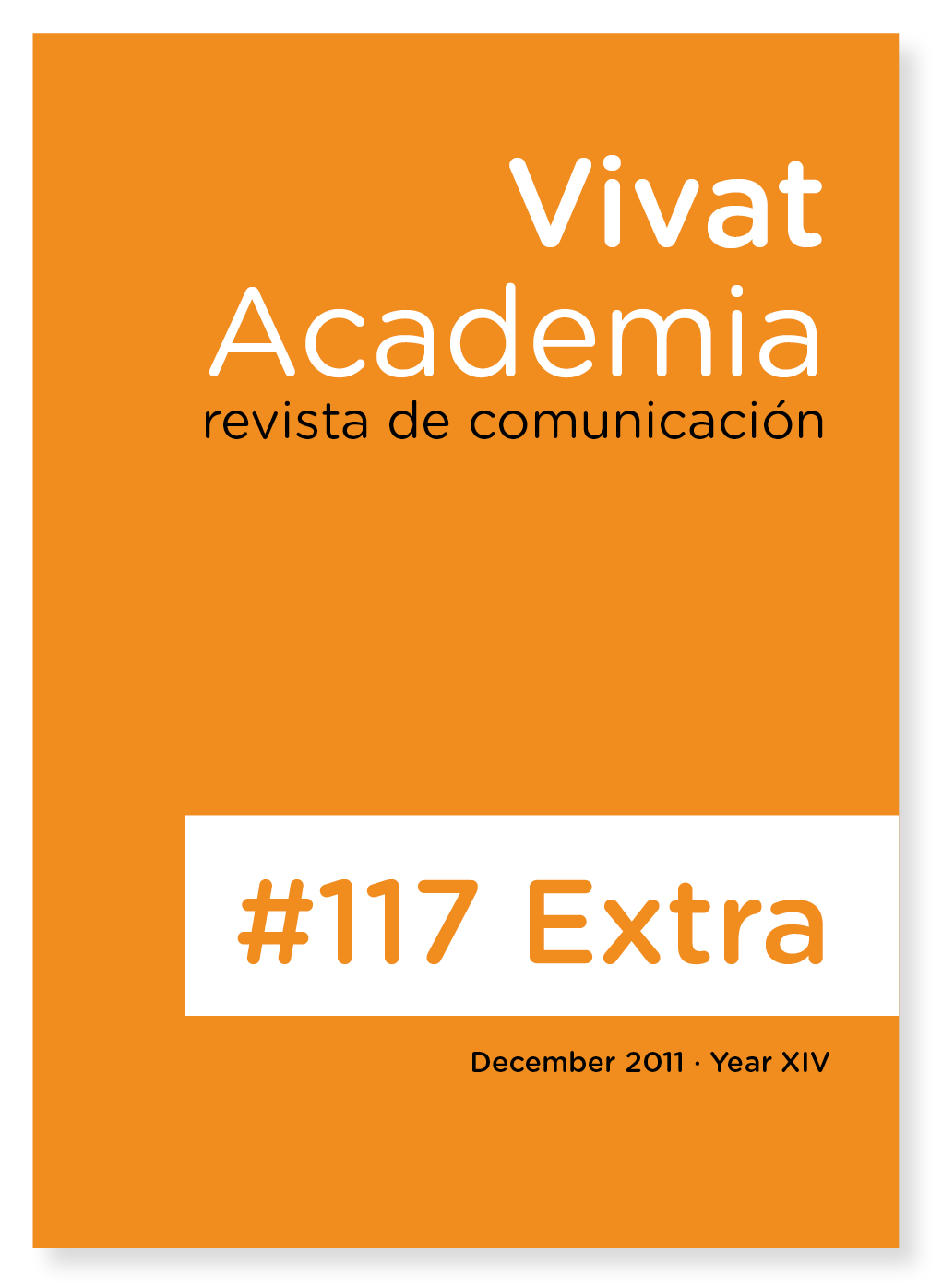Translation or adaptation? Ways of creating radio and tv spots for an advertising campaign
Main Article Content
Abstract
Even though radio and television handbooks praise the specific nature and value of both their languages, as well as their means for the construction of persuasive messages, in practice, the creative transfer between them is felt qualitatively and quantitatively unbalanced. Thus, when facing the study of radio advertising one often comes across vox populi statements about its lack of creativity, its poor use of sound language and, even, its dependence on TV advertising.
Taking the concepts of translation and adaptation as a starting point, and within the framework of a comparative research about radio and TV spots which aims to analyse the problem in depth in order to find out how the different elements of radio and TV languages are used in today’s advertising, this article describes different kinds of connections that can be found between radio and TV spots of the same advertising campaign, according to their resemblance or fidelity.
Downloads
Article Details
References
Balsebre Torroja, A. et. Al. (2006). Los mitos de la publicidad radiofónica. Madrid: Cátedra.
Chaume, F. (2003). Doblatge i subtitulació per a TV. Vic: Eumo Editorial.
Fernández Díaz, F. & Martínez Abadía, J. (1999). Manual básico de lenguaje y narrativa audiovisual. Barcelona: Paidós.
García González, A. (1998). La producción publicitaria en la radio. Vigo: Servicio de Publicacións da Univerisade de Vigo.
Hernández Martínez, C. (1999). Manual de creatividad publicitaria. Madrid: Síntesis.
Huertas Bailén, A. & Perona Páez, J. J. (1999). Redacción y locución en medios audiovisuales: la radio. Barcelona: Bosch.
Millerson, Gerald (2001): Técnicas de realización y producción en TV. Madrid: IORTV.
Shulberg, B. (1992). Publicidad radiofónica. El manual autorizado. México: McGraw-Hill.
Rifkin, B. (1994). Semiotics of narration in film and prose fiction. Case studies of “Scarecrow” and “My friend Ivan Lapshin. Nueva York: Peter Lang.
Barbeito Veloso, Mª L. & Vázquez Gestal, M. (1999). La radio, un medio publicitario infravalorado. La publicidad en la radio. VI xornadas de comunicación social.
BernadaS Suñé, D. & Arcos Foix, N. (2011). Estudio comparativo de la publicidad en radio y televisión. En Estudio, innovación y desarrollo de proyectos en comunicación social
en el EEE . Madrid: Vision Libros.
Barbeito Veloso, Mª L. & Fajula Payet, A. (2005). La radio publicitaria: el peso del inmovilismo. Quaderns del CAC, 22: 49-62.
Corbacho Valencia, J. M. (2010). De la estandarización a la adaptación en la publicidad internacional. Revisión teórica del debate. Zer , XV(28): 181-196.
Edell, J.A. & Keller, K.L. (1989). The information processing of coordinated media campaigns. Journal of Marketing Research, XXVI: 149-163.
Perona Páez, J. J. (2007). Formatos y estilos publicitarios en el prime-time radiofónico español: infrautilización y sequía de ideas. Zer, 23: 219-242.
Barbeito Veloso, Mª L. & Fajula Payet, A. (2009). La sono-esfera digital como nuevo entorno creativo. Trabajo presentado al I Congreso Internacional Ciudades Creativas.
UCM, Madrid, 21-24 octubre de 2009. Recuperado el 15 de julio de 2011, de http://www.clonica.net/usuario/img_usuario/publiradio.net/Des_Inv/la_sonoesfera_digital_como_nuevo_entorno_creativo-2351.pdf
Rodero Antón, E. (2008). Publicidad en radio: Publicidad, sí, pero no radiofónica. Área Abierta, 20. Recuperado el 12 de julio de 2011, de http://www.ucm.es/BUCM/revistas/inf/15788393/articulos/ARAB0808230001E.PDF





